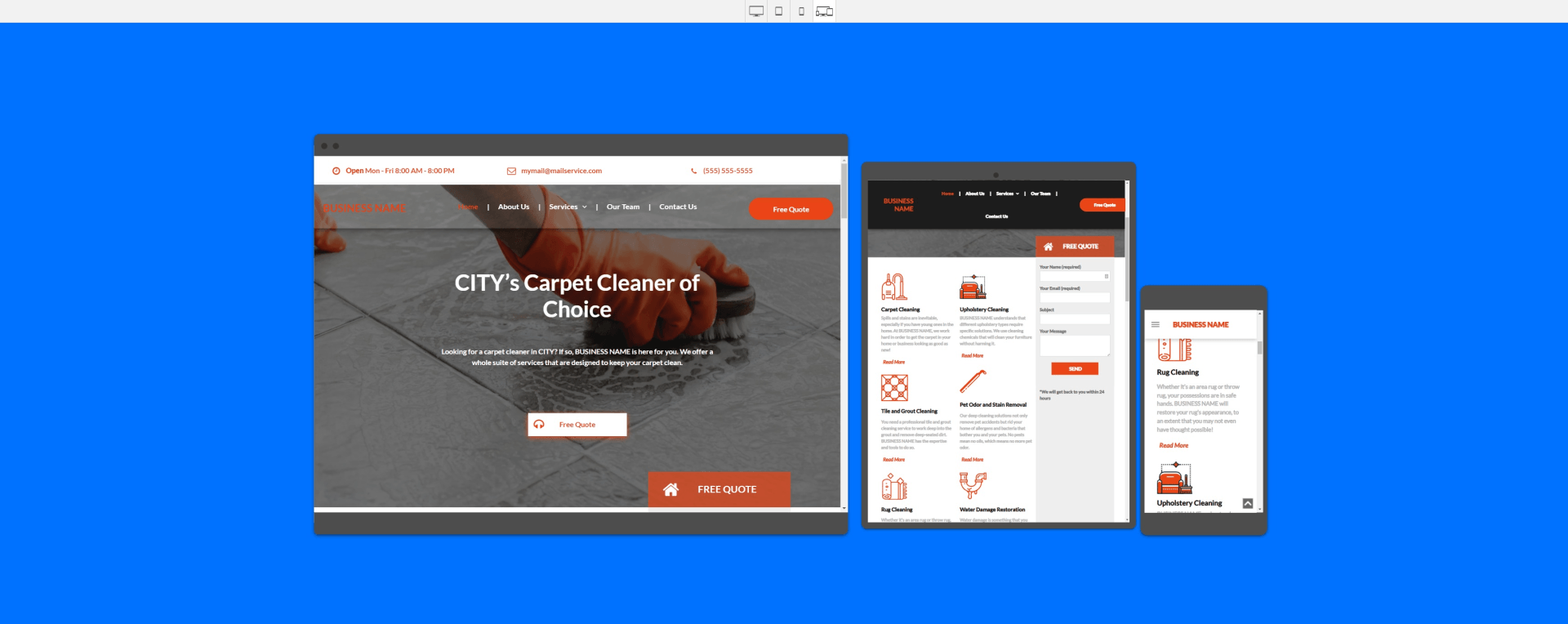
Get Noticed: The Power of Small Business Branding
Do you ever wonder why some small businesses stand out from the crowd while others struggle to get noticed? The answer lies in the power of branding, and understanding why branding is important for small business success. In today's competitive market, branding is essential as it influences customer perception, builds recognition and recall, and creates loyalty. By understanding the impact of branding on your small business, you can create a powerful brand that resonates with your target audience and sets you apart from competitors.
TL;DR Summary
- Create a lasting first impression on your target audience and keep existing customers loyal through effective small business branding.
- Leverage the power of brand guidelines to create a unique selling proposition, build an emotional connection, and gain a competitive advantage.
- Utilize market research, craft compelling brand stories & ensure consistency across channels for long-term success!
The Impact of Branding on Small Business Success
Branding is more than just a logo or a tagline; it's the entire customer experience, from the way your website looks, to how your products or services are presented, and even how people perceive your company. A brand identity is essential for your marketing strategy, as it allows you to stand out from the competition and create a lasting impression on your target audience.
As a small business owner, it's crucial to understand the importance of branding and how it affects your business's identity. By focusing on branding efforts, you can create a powerful brand that not only attracts potential customers but also keeps existing ones loyal and coming back for more.
Customer Perception
The way customers perceive your brand plays a crucial role in your company's success. A positive perception can be the difference between a one-time buyer and a loyal customer who returns again and again. Branding can shape customer perception by forming an emotional bond with customers, building trust, and providing a distinct identity that sets your business apart from its rivals.
For instance, if you're a content marketer targeting small business owners, understanding the industry trends and needs of your ideal customer will help you create a brand that resonates with them. By focusing on what your target audience values and desires, you can position your brand as a solution to their problems and ultimately differentiate yourself from competitors.
Recognition and Recall
Recognition and recall are essential for customers to remember your brand. When people can easily recognize and recall your brand, they are more likely to choose your products or services over those of your competitors.
To build recognition and recall, consistency is key. By using consistent visuals and messaging across all channels, such as logos, colors, fonts, and slogans, you can ensure customers recognize and recall your brand easily. This consistency not only helps create a brand voice, but also fosters trust and loyalty among your customers.
Building Loyalty
Customer loyalty is an ongoing emotional relationship between a customer and a business. It creates trust and encourages customers to keep coming back and spending more with each purchase, rather than choosing competitors. Building loyalty is an important part of creating an emotional connection with customers, and effective branding is key to achieving this.
By developing a strong visual identity, crafting a convincing brand message, and targeting the right audience, you can create an emotional connection with customers that helps your business stand out from its competitors and gain a competitive advantage. The stronger the emotional connection, the more likely customers are to remain loyal and recommend your brand to others.

Essential Components of a Strong Small Business Brand
A powerful small business brand is built on three essential components: a distinct visual identity, compelling brand messaging, and an intimate knowledge of your target audience. These components work together to create a cohesive brand that resonates with your customers and sets your business apart from competitors.
By focusing on these core elements, you can create a brand that not only attracts potential customers but also keeps existing ones loyal and coming back for more. In the following sections, we'll explore each of these components in more detail and discuss how you can leverage them to create a successful small business brand.
Visual Identity
Visual identity is the most recognizable aspect of a business and can heavily influence its reputation. It's composed of the logo design, fonts, photography, brand color palettes, visual style, website, social media content, and business cards - all brand elements which contribute to a unique and memorable look.
Creating strong visual elements requires consistency across all channels and platforms. This means using the same logo, color palette, font style, and photography throughout your marketing materials, website, and social media accounts. A consistent visual identity not only makes your brand easily recognizable but also fosters trust and credibility among your customers.
Brand Messaging
Clear and concise brand messaging is crucial for successful branding. It should focus on the unique value proposition of your brand and communicate what sets your business apart from competitors.
To create effective brand messaging, you need to understand your target market and the problems they face. By crafting messaging that resonates with your audience's needs and desires, you can position your brand as a solution to their problems. This will not only help your business stand out from competitors but also create an emotional connection with your customers.
Target Audience
Identifying your target audience is essential for successful branding. By understanding who your ideal customers are, you can craft branding efforts that will resonate with them and make a lasting impression.
To identify your target audience, consider factors such as brand personality, demographics, psychographics, geographic location, and behavioral characteristics. Once you have a clear understanding of your target audience, you can create a brand that speaks directly to their needs and desires, ensuring that your brand stands out in their minds and keeps them coming back for more.

How Branding Sets Your Small Business Apart From Competitors
Branding sets your small business apart from competitors by creating a unique selling proposition, building an emotional connection, and gaining a competitive advantage. By focusing on these key aspects of branding, you can differentiate your business from its competitors and make a lasting impact in the market.
In the following sections, we'll explore each of these aspects in more detail and discuss how you can leverage them to set your small business apart from competitors and create a powerful brand.
Unique Selling Proposition
A unique selling proposition (USP) is a powerful marketing statement that showcases the unique benefit that your product or service provides to the customer, setting it apart from its competitors. It's an essential element of branding for small businesses.
To create a clear and consistent unique selling proposition, consider what sets your business apart from competitors and how you can communicate this in a way that resonates with your target audience. By focusing on your USP, you can help customers understand why they should choose your brand over others and create a strong emotional connection with them.
Emotional Connection
Emotional connection is key to building loyalty and trust with your customers. By crafting a compelling brand story and personalizing your marketing efforts, you can create an emotional connection with your audience that sets your business apart from competitors.
Storytelling and personalization are key elements that allow customers to engage with your brand on a deeper level and gain insight into your brand's values, mission, and goals. By focusing on these aspects of your branding, you can foster an emotional connection with your ideal customer that keeps them loyal and encourages them to recommend your brand to others.
Competitive Advantage
Competitive advantage gives your business the edge it needs to attract more customers and expand its market share. Gaining a competitive advantage through effective branding can help customers recognize your brand and choose it over competitors.
By maintaining a consistent brand identity, creating a unique selling proposition (service offering), and building an emotional connection with customers, you can ensure that your small business stands out from its competitors and gains a competitive advantage in the market. This will not only help your business grow but also foster customer loyalty, ultimately leading to long-term success.

Strategies for Effective Small Business Branding
Creating a successful small business brand requires a combination of strategies, including conducting market research, crafting a compelling brand story, and ensuring consistency across channels. By focusing on these strategies, you can create a powerful brand that not only attracts potential new customers but also keeps existing loyal customers coming back for more.
In the following sections, we'll explore each of these strategies in more detail and discuss how you can leverage them to create assets for a successful small business brand.
Conducting Market Research
Market research is a powerful tool that can provide invaluable insight into customers, competitors, and the market itself. It can help businesses make informed decisions about their products, services, and marketing strategies, ultimately allowing them to make the most of their opportunities.
There are several types of market research, including primary research, secondary research, qualitative research, quantitative research, and desk research. Each type offers unique benefits and can help you gain a better understanding of your target audience, competitors, and industry trends.
By conducting market research, you can identify the needs and desires of your target customers and craft a brand that resonates with them. This will not only help your business stand out from competitors but also create an emotional connection with your customers, ensuring that your brand remains top of mind.
Developing a Brand Story
A brand story is a powerful narrative that conveys the facts and emotions associated with a brand. It includes the brand's history, mission, purpose, values, personality, and target audience. Crafting a compelling brand story can evoke an emotional response and help build a connection with the audience.
By developing a brand story that resonates with your target audience, you can help customers emotionally engage with your brand and gain a better understanding of its purpose. This emotional connection can not only set your business apart from competitors but also foster customer loyalty, ensuring long-term success.
Consistency Across Channels
Consistency across channels is essential for successful branding, as it helps customers recognize and trust the brand. This means using the same logo, color palette, font style, and messaging across all of your marketing materials, website, and social media accounts.
By maintaining consistency in your branding efforts, you can create a successful brand identity that resonates with your customers and sets your business apart from competitors. This consistency not only helps create a strong brand, but also fosters trust and loyalty among your customers, ensuring long-term success.

Case Studies: Small Businesses With Strong Branding
There are several examples of small businesses that have successfully implemented branding strategies to create strong brands. Some of these businesses include Starbucks, Target, Nike, Apple, Warby Parker, Southwest Airlines, and Coca-Cola. Each of these businesses has crafted a unique brand identity that sets them apart from their competitors and leaves a lasting, recognizable impression on customers.
By analyzing these case studies, we can gain valuable insights into the strategies and techniques used by these larger companies to create powerful brands. This can help us understand how to effectively implement branding strategies for our own small businesses and achieve long-term success.
Example 1
Starbucks is a prime example of a business that has maintained consistent branding throughout its history. The company's logo, colors, and messaging have remained largely unchanged, creating a sense of familiarity and trust among customers.
Small businesses can learn from Starbucks' success by updating all digital presences, using Canva for Work, and creating mood boards for fluidity while sticking to core brand principles. This will help ensure a consistent brand experience for customers and foster trust and loyalty.
Example 2
Target is another example of a business with consistent branding. The company has maintained a steady shopping experience for customers, ensuring that they know what to expect when visiting a Target store. This consistency in branding and customer experience has helped Target stand out from competitors and build a loyal customer base.
Small businesses can take cues from Target's success by focusing on maintaining a consistent brand experience for customers. This will help customers recognize your brand and trust it, ultimately leading to long-term success.
Example 3
Nike has remained consistent in branding, fostering familiarity and trust among customers. The company's logo, colors, and messaging have remained largely unchanged, creating a sense of familiarity and trust among customers.
Small businesses can learn from Nike's success by updating all digital presences, using Canva for Work, and creating mood boards for fluidity while sticking to core brand principles. This will help ensure a consistent brand experience for customers and foster trust and loyalty.

In conclusion
branding is essential for small business success, as it influences customer perception, builds recognition and recall, and creates loyalty. By focusing on the essential components of branding, such as visual identity, brand messaging, and understanding the target audience, small businesses can create a powerful brand that resonates with customers and sets them apart from competitors.
As a small business owner, it's crucial to invest time and resources into developing a strong brand. By learning from the strategies and techniques used by successful businesses, you can create a brand that not only attracts potential customers but also keeps existing ones loyal and coming back for more. So don't wait any longer - start building your powerful brand today!
Do small businesses need branding?
Yes, small businesses need branding. Branding helps to differentiate your business from the competition and create a unique identity that sets you apart. It can also help build trust with customers, showcase credibility, and ultimately, increase sales.
Having an effective brand is essential for any small business that wants to succeed. A well-thought-out brand strategy can create a strong, recognizable identity that will help establish trust and boost sales.
What does branding mean for a small business?
Creating an effective and meaningful brand for a small business is essential for long-term success. It helps customers recognize your business, build trust, and encourages loyalty through consistent messaging. Developing a unique branding strategy can also help you stand out from competitors.
For a small business, branding is an important tool to create recognition, trust and loyalty among customers. It helps differentiate your business from competitors, build positive relationships with customers, and create a strong presence in the marketplace. By creating a memorable and recognizable identity, you can create an image that stands out from the competition.
What are the 3 benefits of branding?
The three benefits of branding are building trust with customers, increasing market share, and driving sales. Additionally, a strong brand can help improve the overall value of a business, attract top talent, and create unity among employees.
What are the 5 C's of branding?
The 5 C's of branding are Company, Collaborators, Customers, Competitors, and Climate; understanding these five elements is essential for establishing a strong brand presence.
With the right strategy, these components can be used to create an engaging and memorable brand experience.
What are 4 four branding strategies?
Creating a strong brand requires careful consideration of four key branding strategies: line extension, brand extension, new brand strategy, and flanker/fight brand strategy.
With a solid understanding of these strategies, you can better develop and reinforce your unique brand identity.








Unlock the Unlimited Potential of Your Business
Our professionals stop at nothing to provide excellent digital marketing solutions.
Do you want your business to be found all over online? Small Biz SEO can help. We are a marketing company that specializes in SEO for small business growth. Our team of SEO experts can help you get the most out of your website and increase your online visibility.
Our Services
All Rights Reserved | Small Biz SEO




















